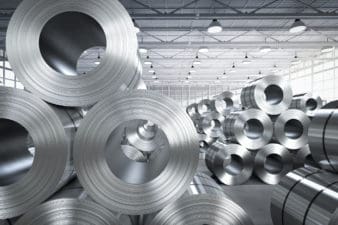As a contrarian investor I try to find assets that have fallen out of favour with the market that still possess solid fundamentals. One asset that has been hit hard of late is silver. Its price is at less than a third of what it was at its bull market peak of US$45 per ounce in April 2011.
However, there are a range of indicators that silver may have finally found a bottom and is ready to rebound.
Now what?
Firstly, the demand for silver is set to soar over coming years.
Because of its conductive properties, silver is an important ingredient used in the manufacture of a range of electronics including silver membrane switches, touchscreens, LCD panels, semi-conductor stackers and LEDs. These are all essential components in a range of modern electronic devices.
Silver is also an important part of the manufacturing process for photo-voltaic cells, which are used in solar panels. With a number of countries setting aggressive clean-energy targets and substantially boosting their installed solar capacity, demand for photo-voltaic cells will grow exponentially. Between now and 2018 alone it is expected that demand for silver that is solely used in the manufacture of photo-voltaic cells will grow by 42%.
Secondly, the gold to silver ratio is well out of whack with its historical average.
The gold to silver ratio essentially captures the relationship between gold and silver prices. A high ratio indicates that silver is undervalued relative to gold. Now, with 76 ounces of silver required to purchase an ounce of gold, silver appears sharply undervalued, particularly when you consider that this is well above the historical average, which has required between 50-60 ounces of silver per ounce of gold.
Finally, physical supplies of silver are declining.
While industrial demand for silver continues to rise, the amount of physically available silver above the ground and available for consumption is declining. This is because at US$14 per ounce, silver is below the cost of production for many miners.
For the third quarter, Pan American Silver Corp. (TSX:PAA)(NYSE:PAAS) reported all-in-sustaining costs of US$16.29 per ounce, while First Majestic Silver Corp.’s (TSX:FR)(NYSE:AG) were US$14.41 per ounce. This indicates that they, along with many of their peers, are generating a loss for every ounce of silver produced. As a result, miners will wind down their higher-cost production as they attempt to remain profitable, and this means that global silver production will fall.
When considered in conjunction with growing demand, this will lead to a constrained supply situation that can only help to push silver prices higher.
So what?
The best way to cash in on higher silver prices is by investing in precious metals streamer Silver Wheaton Corp. (TSX:SLW)(NYSE:SLW). Not only does it offer the same leveraged exposure to silver as the miners, but it does so with a lower degree of risk.
Silver Wheaton doesn’t operate any mines. Rather, it provides financing to miners in exchange for the option to buy a portion of the silver produced for substantially less than the market price, giving it a far lower cost base than the miners. For the third quarter, Silver Wheaton reported cash costs of US$4.58 per ounce, whereas both Pan American and First Majestic reported cash costs in excess of US$8 per ounce.
The only headwind for Silver Wheaton is the CRA investigation that could see it liable for $353 million in additional taxes and penalties should an adverse finding be made.
Nonetheless, it appears particularly attractive with solid fundamentals set to drive silver prices higher over the long term.





